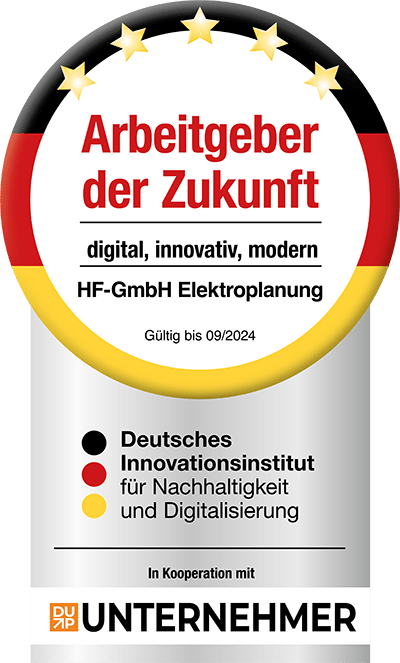31. März 2024§ 14a Energiewirtschaftsgesetz (EnWG)
§ 14a Energiewirtschaftsgesetz (EnWG) - Neuregelung zur Integration von steuerbaren Verbrauchseinrichtungen und steuerbaren Netzanschlüssen
mehr dazu
30. März 2024LIGHT+BUILDING
Zwischen dem 3. und 8. März war es wieder soweit - die „light+building“ öffnete ihre Türen für alle Licht-und Technikbegeisterten.
mehr dazu
29. März 2024Gebäudeautomation seit Januar im GEG
Gerade im Bereich der Gebäudeautomation ist eine gute Elektroplanung unabdingbar.
mehr dazu
28. März 2024DIN 18014 | 2023-06 Erdungsanlagen für Gebäude
Bei HF beschäftigen wir uns stets mit den neuesten Normen und Anforderungen an Bauvorhaben.
mehr dazu
27. März 2024Das neue GEG – ein klimafreundlicher Ausblick
Das GEG: 2023 novelliert und seit Januar diesen Jahres in Kraft getreten.
mehr dazu
7. Januar 2024Immer Up-To-Date
Regelmäßige Schulungen sind für unsere Arbeit und unseren Leistungsanspruch essenziell.
mehr dazu
3. Januar 2024Zuwachs bei HF
Mit Stolz wollen wir unsere Azubis vorstellen.
mehr dazu
1. Januar 2024Auf zu neuen Ufern
Bereits im Jahr 2020 wurde von uns die HF-GmbH International als Schwesterfirma mit eigenem Leistungskatalog zur HF-GmbH Elektroplanung gegründet.
mehr dazu
30. Dezember 2023HF frischt seine erste Hilfe auf!
Fortbildungen und Schulungen sind wichtig für die Arbeit bei HF - auch abseits von Baustelle und Schreibtisch gibt es viel zu lernen.
mehr dazu

